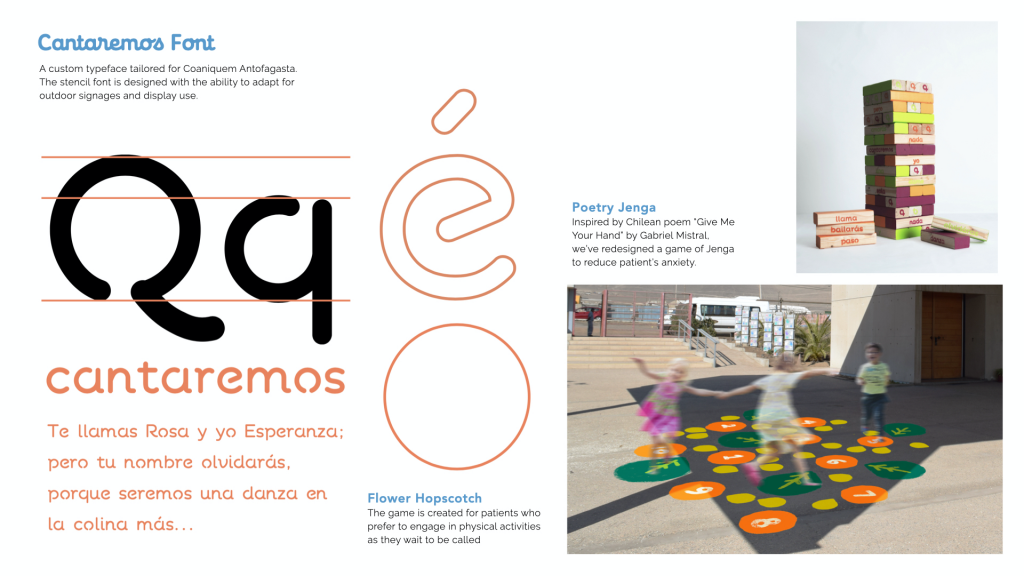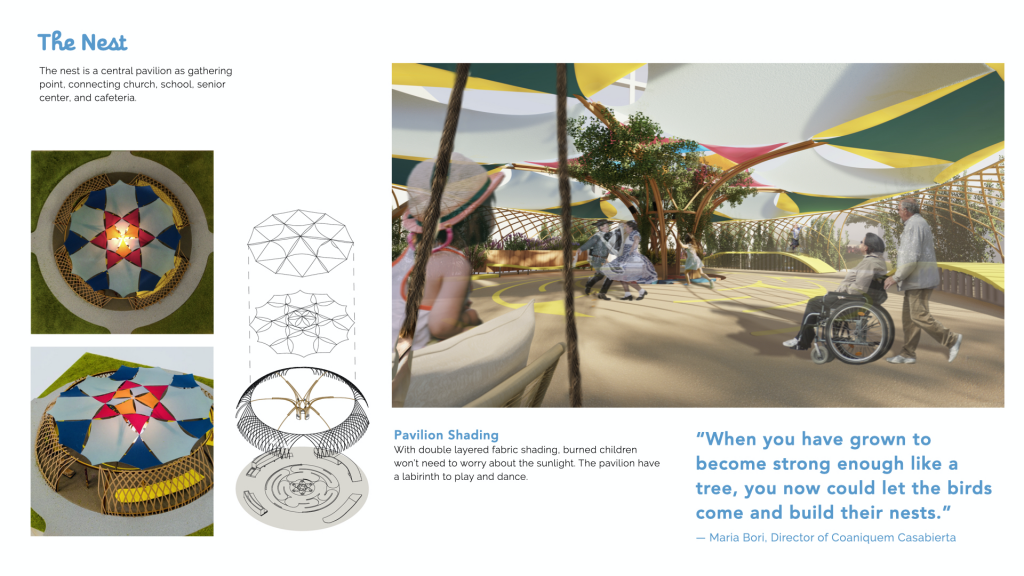Coaniquem is a nonprofit pediatric burn treatment facility based in Santiago, Chile. Our challenge is to envision innovative and cost-effective ways to create engaging outdoor environments and systems that will support healing and nurturing atmosphere within the existing campus of COANIQUEM in Northern Chile. Together with the patients and staff, transdisciplinary student teams are challenged to co-create playful and therapeutic environments that will welcome young burn patients and their families at COANIQUEM’s satellite campus in Antofagasta which is located in the Atacama Desert. Atacama desert is the driest land on earth and highly exposed to the sun. In order to protect burn patients while utilizing solar energy, we need to design a solar shading system that connects the whole campus.
The Healing Garden is the result of a co-creation in Safe Niños 2019 to expand COANIQUEM’s pediatric burn center campus in Northern Chile, to add housing and services for both pediatric patients and seniors, along with public green spaces to connect across generations.
This project has enabled us to travel to Chile to do research about the desert environment and to talk with the patients and staff. The Healing Garden creates outdoor social spaces to support the healing of young burn patients, in a community shared with older adults living in senior housing, where both groups can contribute and engage with each other.
The Healing Garden’s environmentally responsible and culturally considered approach integrates native sensory landscape, indigenous Chilean design principles, and inclusive, accessible spatial design. The efficient solar orientation, energy, and sunshades provide natural cooling and offer sun protection essential for burn patients as their skin heals. The accessible garden beds enable our villagers to grow plants and tend the garden with playful animal friends that exist in all Coaniquem campuses. This project would be impossible without the generous guidance of Penny Herscovitch, Dan Gottlieb, Stella Hernandez, Dr. Rojas Zegers, Dr. Jorge Rojas–Goldsack, Hernan Ugarte Prieto, and faculties in ArtCenter.
The outdoor space of the campus was barren. In order to bring more cool air and to protect the patients from the sun, we created a green healing space for children with a help of sustainable structures. Keeping the sustainable aspect in mind, we developed three solar shading systems with local fabric to provide energy for outdoor lighting during night time. Also, we applied drought-tolerant plants and local desert flowers to create a desert oasis. The main shading pathway responds to the Healing Tree story as it branches out to connect the whole campus.
Instead of a rigid division, we imagine a new Coaniquem campus serving as a village. The regular villagers include seniors living in the senior center; burnt children and their parents; and Coaniquem staff. To unify the spirit of the village, we created a font, Cantaremos, which is being used as sustainable indoor and outdoor signages. Playful environmental graphics are applied in the space to create stories for kids.
The diversity of Coaniquem family had inspired us to create outdoor activities so they will feel at ease and be able to get to know each other as they wait for their appointments. We designed accessible garden beds that bring up children’s eye levels to connect multiple generations. Our programs include the interactive Welcoming Wall, the Poetry Jenga, the Flower Hopscotch, a juice bar, a non-directive playground, and the Nest serving as the heart of Antofagasta campus.






















